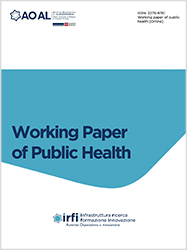Mesothelioma: one disease, many definitions. Comparative linguistic analysis in a “health literacy” perspective

All claims expressed in this article are solely those of the authors and do not necessarily represent those of their affiliated organizations, or those of the publisher, the editors and the reviewers. Any product that may be evaluated in this article or claim that may be made by its manufacturer is not guaranteed or endorsed by the publisher.
Objectives: The aim of this paper is to demonstrate how, while remaining within a specific field such as medicine, it is possible to use different languages depending on the target audience (doctors, professionals from other fields or patients) in order to improve its degree of health literacy. In particular, the aim is to show how even the definition of a disease, which should in principle be unambiguous, can in fact be linguistically adapted to the reader's basic knowledge. Methodology: Five definitions of mesothelioma are examined, analysed lexically, syntactically and graphically. Specifically, this comparison is made on three main levels, which in turn have different nuances: popular, including definitions from Wikipedia and the UK Mesothelioma patient portal; intermediate, corresponding to the Collins English language dictionary; and specialist, with definitions from the MeSH thesaurus and the Orphanet database. Results: At the end of the comparative analysis, it is possible to state that in linguistic and Health Literacy terms there is no single definition for this rare disease but as many definitions as there are targets. In particular, they vary in syntactic structure, graphic form and vocabulary, as they have to use technicalities typical of the medical field but have different nuances of complexity. Conclusion: A comparison of the definitions shows that the degree of readability does not always correspond to that of comprehensibility. The analysis demonstrates that it is difficult to explain complex medical concepts to practitioners and patients in a simple, clear and usable way and that this requires specific techniques of Health Literacy, related to both the linguistic and graphic aspects. The comparison of definitions is therefore a methodological premise for the creation of brochures dedicated to mesothelioma and the revision of the "Mai soli" site for mesothelioma patients.
PAGEPress has chosen to apply the Creative Commons Attribution NonCommercial 4.0 International License (CC BY-NC 4.0) to all manuscripts to be published.

 https://doi.org/10.4081/wpph.2020.9242
https://doi.org/10.4081/wpph.2020.9242




